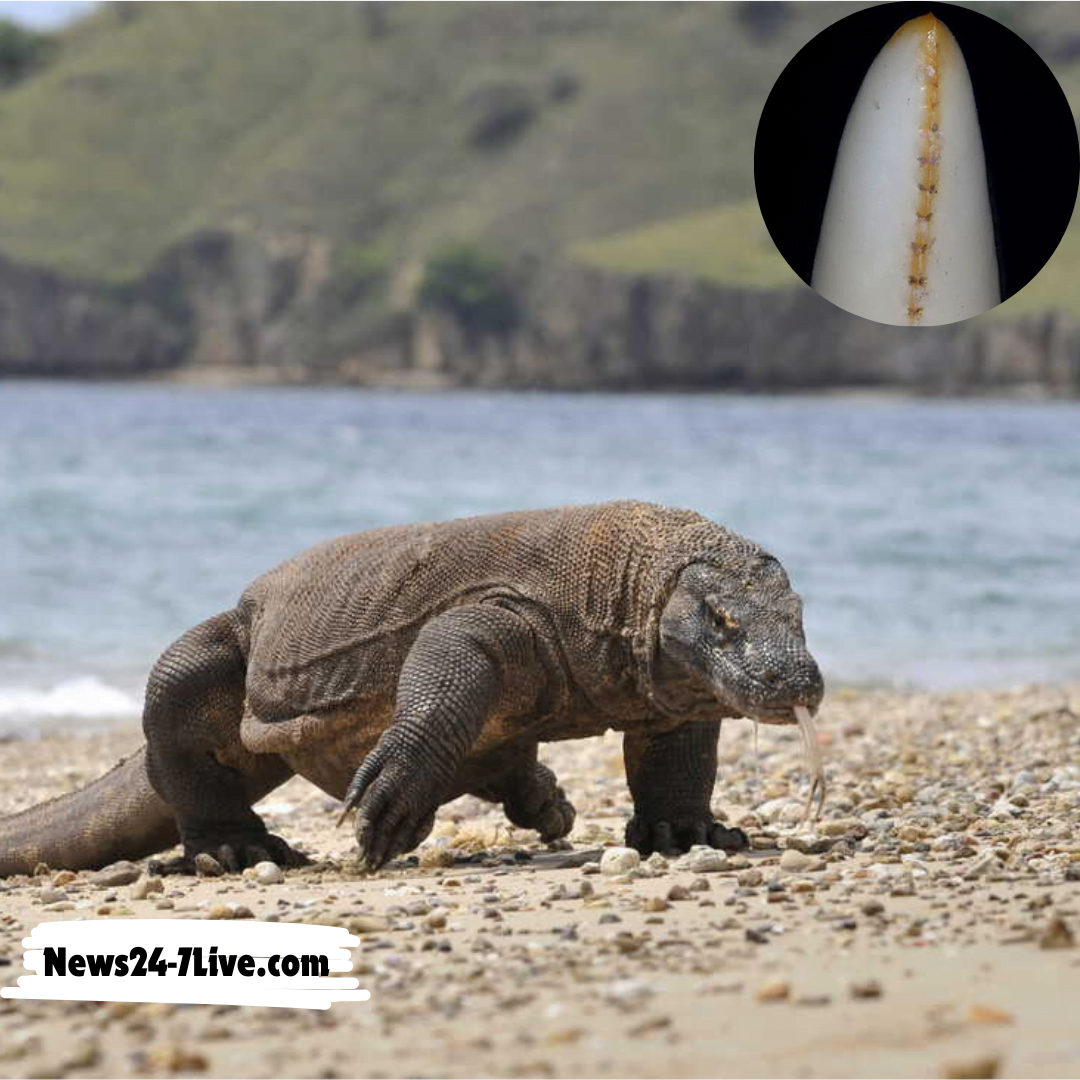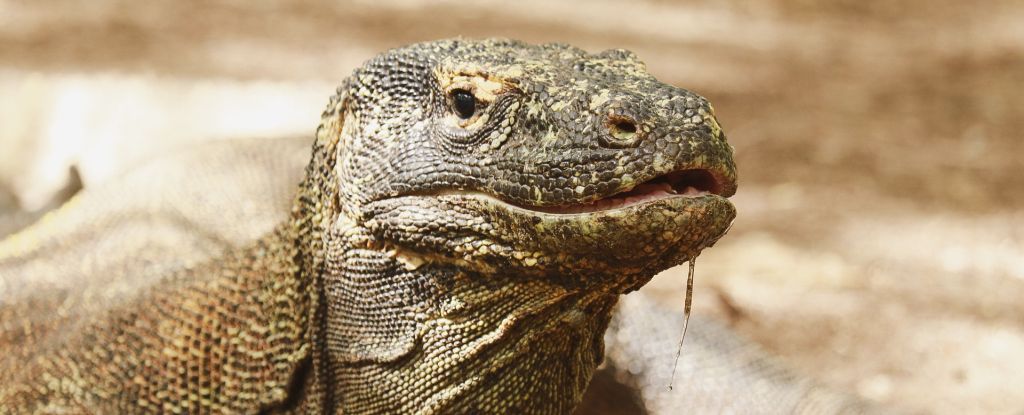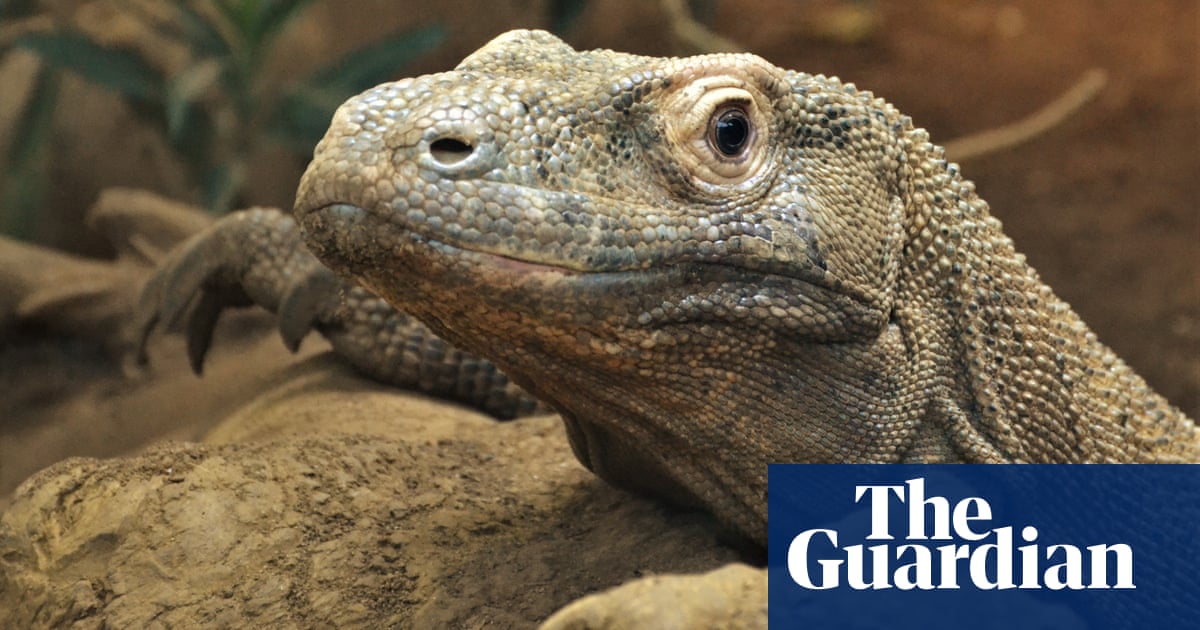Komodo dragons native to the Indonesian islands of Komodo, Rinca, Flores and Gili Motang, these predators can grow up to three meters (10 feet) in length and weigh as much as 90 kilograms (200 pounds). Known for their venom and sharp teeth, Komodo dragons have now been the subject of a study led by researchers from King’s College London.

Also Read: Stress in Humans can Affect Dogs Mood and Choices, Study Reveals
Researchers from King’s College London published their findings in the journal Nature Ecology & Evolution on July 24, 2024.
The study employed advanced chemical and structural imaging techniques to investigate the teeth of Komodo dragons.
The study discovered that Komodo dragon teeth are coated with a thin layer of iron. This iron coating is found in the tips and serrated edges of the teeth, giving them an orange pigment. The presence of iron in these teeth is a previously undocumented feature in carnivorous reptiles.
The iron-rich coating plays a crucial role in maintaining the sharpness of the Komodo dragons’ teeth. It acts as a protective layer that prevents the teeth from dulling rapidly which is essential for their predatory lifestyle.
Without this iron coating, the enamel on their cutting edges would wear away more quickly reducing their effectiveness in slicing through meat.
The researchers found that similar iron coatings are present in the teeth of other living reptiles such as monitor lizards, crocodiles and alligators.
The presence of such coatings in Komodo dragons is due to their large size and powerful predatory capabilities.
The Komodo dragon (Varanus komodoensis) is the largest living lizard species measuring up to 3 meters (9.8 feet) in length and weighing up to 150 kilograms (330 pounds).
They are native to the Indonesian islands of Komodo, Rinca, Flores and Gili Motang.
These reptiles are apex predators in their habitat known for hunting a wide range of prey including large mammals such as deer, water buffalo and even occasionally humans.
Their hunting strategy involves ambushing prey delivering a venomous bite that exacerbates blood loss and then tracking the weakened prey until it succumbs.
A study has revealed that the serrated edges and tips of Komodo dragon teeth contain concentrated deposits of iron. This discovery is the first instance of such a coating in any animal.
The presence of iron gives the teeth an orange tint along the serrated edges, enhancing their cutting ability by maintaining a razor-sharp edge.
Also Read: Dark Oxygen Found in Deep Ocean 13,000 feet Below Sea Level
The study employed advanced microscopy and spectroscopy techniques to analyze the teeth of a male Komodo dragon named Ganas, who lived at the London Zoo.
Ganas was euthanized in February 2023 due to untreatable degenerative arthritis providing researchers with an opportunity to conduct a thorough examination of his teeth.
The structure and composition of Komodo dragon teeth bear similarities to those of meat-eating dinosaurs such as the theropods including Tyrannosaurus rex.
This resemblance suggests that some dinosaurs might have similar dental adaptations to enhance their predatory capabilities.
Although researchers were unable to confirm the presence of iron in fossilized dinosaur teeth due to changes during the fossilization process, the study provides insights into how carnivorous dinosaurs may have maintained sharp teeth.
The structural adaptation seen in Komodo dragons may have parallels in dinosaurs although research is needed to confirm this hypothesis.
The study indicates that the iron coating might not be exclusive to Komodo dragons. Other reptiles including various monitor lizards, crocodiles and alligators exhibit similar iron deposits in their teeth albeit in lesser concentrations.
Komodo dragons are currently classified as endangered with an estimated 3,500 individuals remaining in the wild. Their populations face threats from habitat destruction, climate change and illegal hunting.
Komodo dragons are currently listed as endangered by the International Union for the Conservation of Nature (IUCN). Their populations are threatened by habitat destruction due to human activities and climate change.
The study analyzed teeth from various Komodo dragon specimens including those from museum collections and a specimen named Ganus, who lived at the London Zoo until its euthanasia last year.
Also Read: Night Owls have Better Cognitive Ability than Early Risers






















